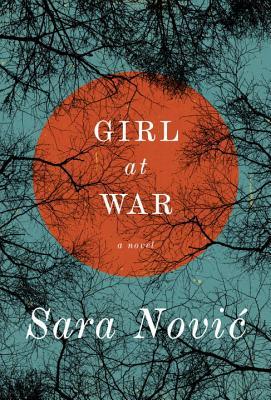Be Careful What you Read on Halloween
Don’t read fairy tales on Halloween. Just don’t. Trust me on this; I know what I’m talking about.My name is Cara, I’m ten years old, and I like fairy tales. Correction: I used to like fairy tales. Mom is always saying fairy tales are good clean, safe reading for a kid like me, and things half the books out there are too violent, and half are too mushy. I kind of agree about the mushy part. Yuck. But none of the books she rants about is half so violent as Grimm’s fairy tales, and Mom ought to try reading them sometime. But not on Halloween. Let me tell you.
It was while I was reading Cinderella that things began getting weird. I took a break to light my jack-o-lantern, and when I opened the lid a bunch of mice jumped out and took off, then sort of vanished. That was bad enough. I mean, mice are kind of cute, but not in my room, and not in my pumpkin. At least they hadn’t eaten it. And if they vanished I wasn’t too likely to find them in my bed later.
But it was “Little Red Riding Hood” that pushed matters way beyond funny. Odd-funny, I mean. Even the mice weren’t laugh-until-you-wet-yourself funny. Just weird. I don’t really like scary stories, and I hated it last summer at camp when all the girls started telling ghost stories, even though they were mostly stupid. But I believed Mom about fairy tales being wholesome, and figured the Big Bad Wolf was scary enough for Halloween. And he was. Oh, yes. But he wasn’t all I got.
By the second page, when Little Red Riding Hood was walking through the dark and spooky forest to take her basket to her Granny, I could see—well, almost see—something out of the corner of my eye. When I turned to get a better look, it vanished. But long before we reached the cottage, I knew what it was. The wolf was there, watching.
I tried to stop reading. This was more spookiness than I wanted, especially on Halloween. But the book wouldn’t close. My eyes kept tracking the words, and the almost-seen wolf grew larger and more real. Then I got to the gory part. It would have been bad enough to watch the wolf swallow Granny whole. And if I’d stuck with the original Grimm tale where they kill the wolf and everyone stays dead, it might have been fine.
But Mom had decided that the Grimm fairy tales were too grim, and bought me a book of the prettied-up stories, where everyone lives happily ever after (except the wolf; he gets the axe either way). That was what I was reading, but the other story was in my mind, too. So I got it both ways.
By now I wasn’t even reading, anyway. I was just starting at the page and watching the story unfold in the corner of my eye. I wasn’t scared yet, not really. I thought it was some cool special effect they’d put in the book. They work so hard these days to make books compete with computer games.
I didn’t get really scared until Granny climbed out of the carcass of the wolf, which is what she does in the modern, non-scary version. They never talk about how that works. I mean, I’m pretty sure my book implies that the wolf swallowed her whole and she just sat in there alive until the woodsman let her out. Never mind how she managed to breathe in its stomach for a half hour or whatever. In Grimm, she doesn’t come back out.
Anyway, I should have known better, because that cleaned-up story doesn’t even make sense. No one could live in the belly of a wolf for a half hour, even if it swallowed her whole, and why would it? No, the reality was quite a bit different. The wolf ate Granny. Not totally in little bits, but she was dead all right when she went down the gullet. Because he really was a giant wolf, totally unreal but there he was, or wasn’t, but I saw it, as long as I didn’t look.
He ate her. Tore out the throat, took a few bites here and there, and only then swallowed her mostly whole. So the Granny the woodsman set free shouldn’t have been alive, and she wasn’t. But she was awfully lively for a dead woman. An un-dead woman.
That was too much for me, and I finally managed to tear my eyes away from the book.
The images of Little Red Riding Hood and the woodsman vanished. But the body of the giant wolf stretched across my room, occupying most of the floor. And Granny stood there, bloody and undead.
Then she spoke.
“Brains.”
I screamed. The zombie Granny and the wolf—who also seemed to be showing signs of un-life—were between me and the door, so I went out the window. It’s a good thing my room is on the ground floor, because I’d have done the same if it had been the tenth floor.
But I didn’t think to slam the window shut behind me. So now she’s out there somewhere, Zombie Granny and maybe the wolf-zombie too. I wonder if he’ll eat her again, or if now that they’re both zombies they’ll work together?
I ran like crazy, right to the kiddie Halloween Carnival at the church on the next block. If I’m not safe here, I’m safe nowhere. And no one will believe me, but I’m not leaving here until morning. If then.
I can hear a scratching at the door. Can zombies even enter a church?
I am never reading fairy tales again.
###
©Rebecca M. Douglass, 2013
As always, please ask permission to use any photos or text. Link-backs appreciated!
Like my stories? Please consider buying one of my books.
In particular, Book 3 of the Ninja Librarian series is coming out Nov. 28! Preorders are now available from Amazon and Smashwords for the ebook. Preorder the paperback directly from this site and we'll pick up the shipping costs!
As always, please ask permission to use any photos or text. Link-backs appreciated!
Like my stories? Please consider buying one of my books.
In particular, Book 3 of the Ninja Librarian series is coming out Nov. 28! Preorders are now available from Amazon and Smashwords for the ebook. Preorder the paperback directly from this site and we'll pick up the shipping costs!
























